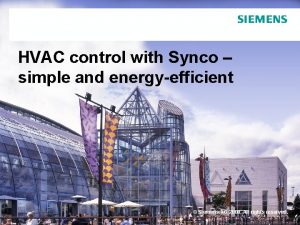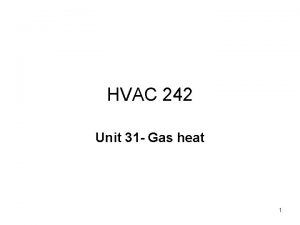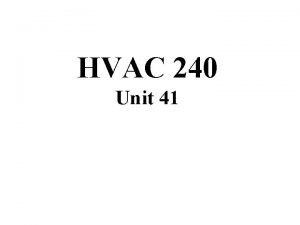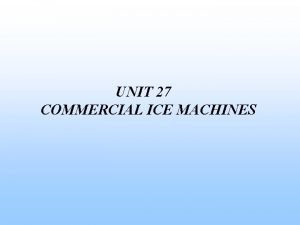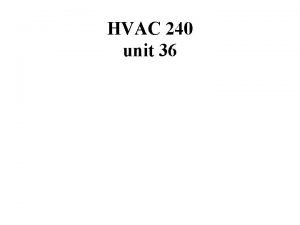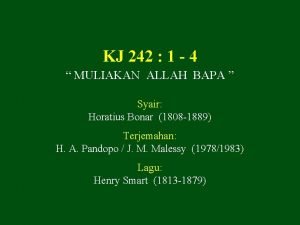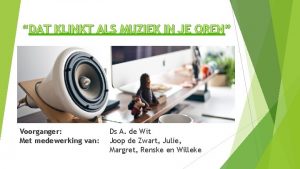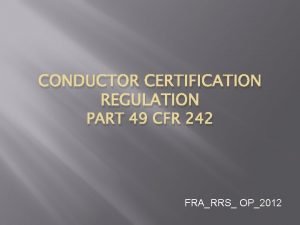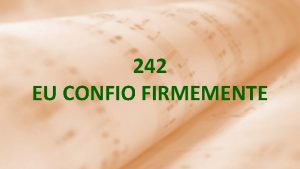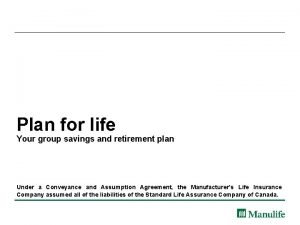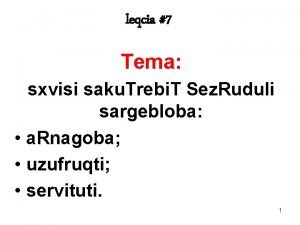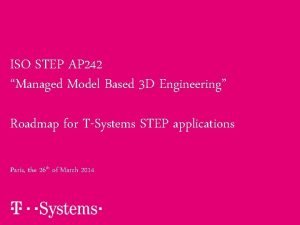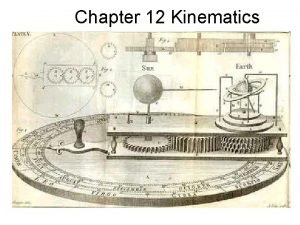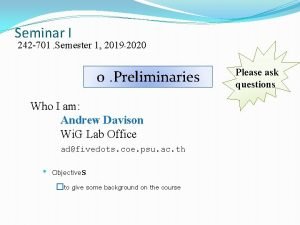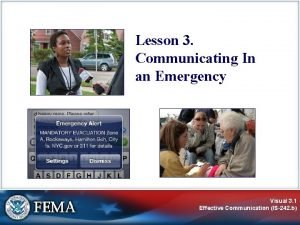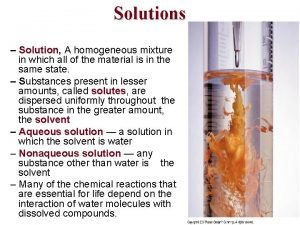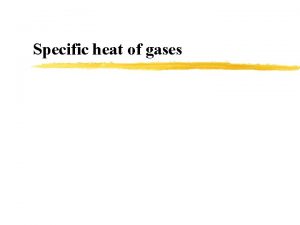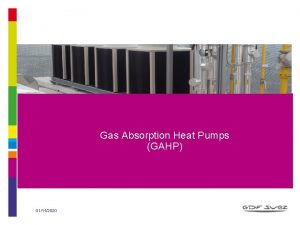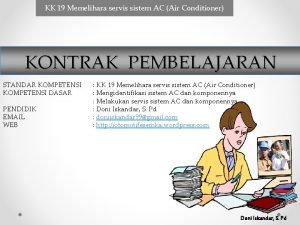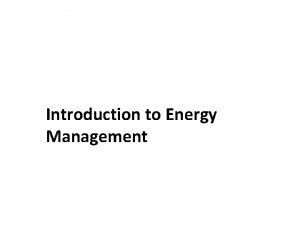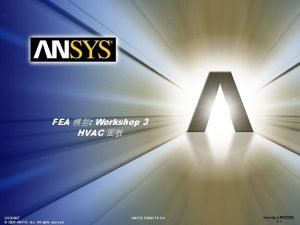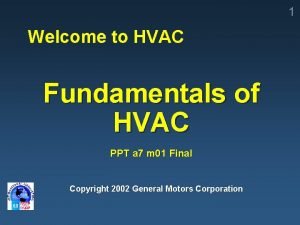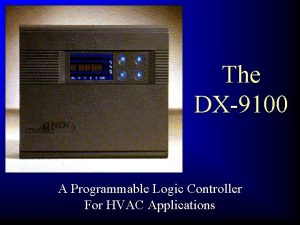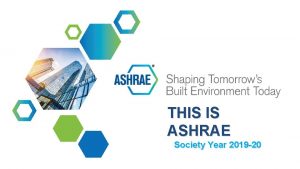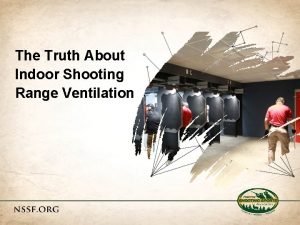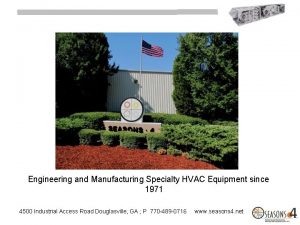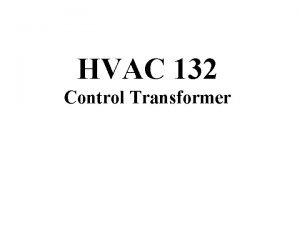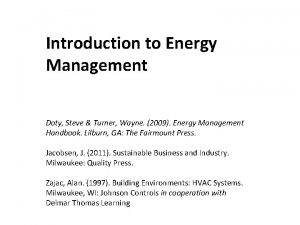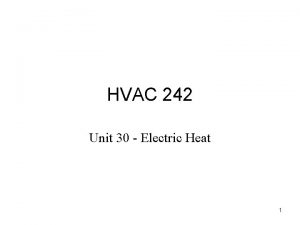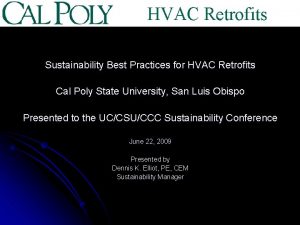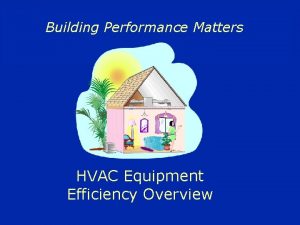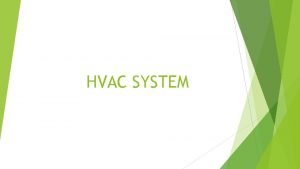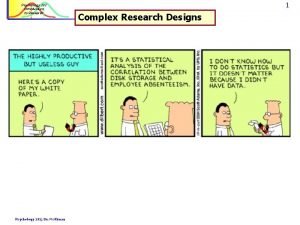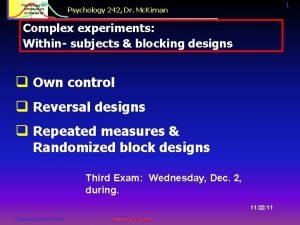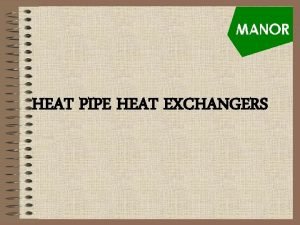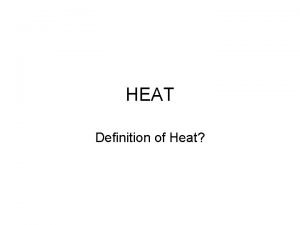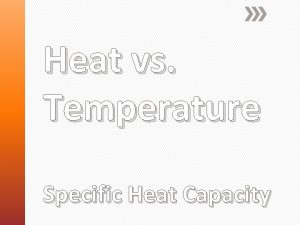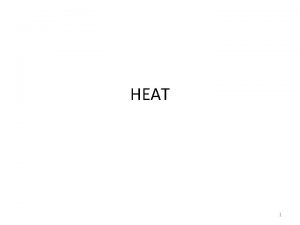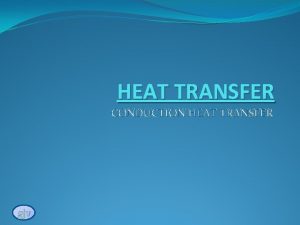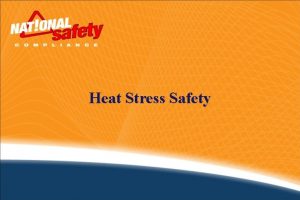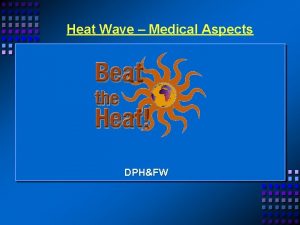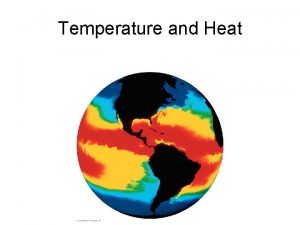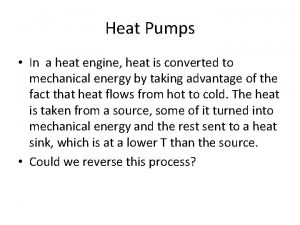HVAC 242 Unit 31 Gas heat 1 31
























































- Slides: 56

HVAC 242 Unit 31 - Gas heat 1

31. 1 Introduction to Gas-fired Forced Hot Air Furnaces • a. Heat producing system 1. Manifold and controls- meters the flow of gas to the burners 2. Burners, heat exchanger and venting system • b. Heated air distribution system 1. Blower 2. Ductwork and ductwork assembly 2

31. 2 a. Types of Furnaces Upflow 1. Stands vertically 2. Hot air is discharged from the top (S/A)of the unit b. "Low Boy" 1. Used in areas with low headroom 2. Both the return and supply air are at the top c. Downflow or Counterflow 1. Air intake is at the top-R/A 2. Air discharge is at the bottom-S/A 3

31. 2 Types of Furnaces d. Horizontal – 1. Positioned on its side 2. Used in crawl spaces or attics and can be suspended from floor joists e. Multi-positional 4

31. 3 Gas Fuels • Natural gas 1. Composed of 90 to 95% methane and other hydrocarbons 2. Natural gas has no color or odor 3. Displaces oxygen and can lead to suffocation 4. Can explode if it accumulates in an area 5. Sulfur compounds, adds a odor smell to the gas for leak detection purposes 6. Gas flows to the burners through a small opening (orifice) in a fitting called a spud 5

31. 3 Gas Fuels Liquefied petroleum 1. Liquefied propane, butane or a combination of both 2. Kept a liquid by keeping it under pressure until used 3. Should not be used alone in a natural gas furnace (it will over fire) [10. 5”wc instead of 3. 5” wc] 6

31. 3 Gas Fuels Propane 1. Displaces oxygen so it can cause suffocation 2. Can explode when allowed to accumulate in an area 7

31. 3 Gas Fuels Butane is not very popular, difficult to work with 8

31. 3 Gas Fuels Manifold pressures 1. Should be set according to manufacturer's specifications 2. Expressed in inches of water column (in. W. C. ) 3. Natural gas: 3 to 3 ½ in W. C. 9

31. 3 Gas Fuels 6. LP gas 10. 5 in. W. C. 7. Water manometer 1. Used to measure gas pressure 2. Standard manometers read in inches of water column 3. Gas pressure is introduced to one side of the manometer 4. The other side is open to the atmosphere 5. Pressure is determined by the difference of these two pressures 10

31. 4 Gas Combustion 1. Combustion requires fuel, oxygen, and heat 2. Rapid oxidation or burning 3. Ignition temperature for natural gas is about 1100 degrees to 1200 degrees F 4. Perfect combustion produces carbon dioxide, water vapor and heat 5. Imperfect combustion produces carbon monoxide, soot, and other products 1. Carbon monoxide is a colorless, odorless poisonous gas 2. Soot lowers furnace efficiency 11

31. 4 Gas Combustion 6. Atmospheric burners - gas and air mixtures are burned at atmospheric pressure 7. Gas is metered to the burner through the orifice 8. Velocity of the gas pulls in the primary air 9. Gas and air are mixed in the mixing tube 10. The mixture is forced through the burner ports or slots and is ignited 12

31. 4 Gas Combustion 11. Secondary air is drawn in to support combustion 12. Flame should be blue with orange, not yellow, tips 13. Yellow tips indicate an air starved flame, not enough primary air, emitting carbon monoxide 14. Orange flames indicate burning dust particles 15. Gas pressure and primary air are the only adjustments that can be made 13

31. 5 Gas Regulators 1. Drops the pressure to the proper level 2. Maintains constant pressure at the outlet where the gas is fed to the valve 3. LP gas regulators are located at the supply tank, the side of the house & in the unit 4. Most regulators can be adjusted 5. Most regulators are built in to the gas valve (combination gas valves) 14

31. 5 Gas Regulators 6. Always consult manufacturer's specifications when setting regulators 7. Converting from natural gas to LP involves: 1. 2. 3. 4. Changing the regulator pressure Installing smaller burner orifices Installing new pilot orifice Possibly changing the ignition/control module 15

31. 6 Gas Valve 1. Gas is piped from the pressure regulator to the gas valve and then on to the manifold 2. Gas valves equipped with pilot valves &/or regulators are called combination valves 16

17

31. 7 Solenoid Valve 1. Usually normally closed valves 2. When the coil is energized the plunger is pulled into the coil, opening the valve 3. Plunger is spring loaded to close the valve when the coil is de-energized 18

31. 8 The Diaphragm Valve a. Uses gas pressure to open the valve pilot operated valve b. Valve is closed 1. Coil is de-energized 2. Diaphragm is pushed down 3. Gas pressure pushing down on diaphragm 19

31. 8 The Diaphragm Valve c. Valve is open 1. Coil is energized 2. Diaphragm is pushed up 3. Gas above the diaphragm is vented to the pilot 4. Gas pressure below pushes the diaphragm up 20

31. 8 The Diaphragm Valve d. Thermally operated valve 1. On a call for heat, a bimetal strip is heated and it warps 2. When the bimetal strip warps it closes the valve to the upper chamber and opens the bleed valve 3. The bleed valve sends the gas to the pilot, where it is burned 4. The pressure below the diaphragm pushes the valve open 21

31. 9 Heat Motor-controlled Valve a. On a call for heat, a rod attached to the valve is heated b. This rod expands and opens the valve c. The rod is heated by resistance wire that is energized by the heating circuit d. When the circuit is opened, the rod contracts and the spring closes the valve e. It takes about 20 seconds to open the valve and 40 seconds to close it 22

31. 10 Automatic Combination Gas Valve a. Used in some modern gas furnaces b. Automatic combination valves are equipped with 1. 2. 3. 4. 5. 6. A manual control Gas supply for the pilot (PV) Pilot adjustment and safety shutoff feature Pressure regulator Main gas valve controls (MV) Programmed safe lighting features 23

31. 11 Manifold a. Manifold is attached to the outlet of the gas valve b. Gas flows through the manifold to the burners c. Burners are also mounted to the manifold 24

25

31. 12 Orifice a. Gas flows from the manifold to the burners through the orifice b. Orifice is a precisely sized hole c. Located in the spud, which is screwed into the manifold d. The orifice allows the correct amount of gas into the burner 26

27

31. 13 Burners a. This is where combustion takes place b. Uses primary and secondary air c. Primary air enters the burner with the gas d. Secondary air comes in around the burner & is provided to ensure proper combustion e. Gas is ignited by the pilot 28

29

31. 13 Burners f. Atmospheric burners use air at atmospheric pressure g. Cast iron burners- drilled or slotted h. Stamped steel slotted burners i. Ribbon burners j. Single port burners (inshot or upshot) 30

31. 14 Heat Exchangers 1. Burners are located at the bottom of the heat exchanger 2. Each section (cell) of the heat exchanger has its own burner 3. Heat exchangers must have the proper air flow across it 1. Too much air flow can cause the flue gases to cool 1. Flue gases may condense 2. Condensing flue gases contain acid 2. Not enough air flow can overheat the exchanger 31

31. 14 Heat Exchangers 4. Temperature rise = leaving air temperature - return air temperature 5. Correct temperature rise can be found on the furnace nameplate 6. Normal temperature rise ranges from 40 degrees to about 70 degrees F 32

31. 14 Heat Exchangers 7. Heat exchangers must not leak 8. The heated air must be separated from the combustion gases 33

31. 15 Fan Switch 1. Turns the blower on and off automatically 2. Can be temperature controlled or time delay 3. Fan does not start immediately so the heat exchanger has time to “warm up” (~2 min’s) 4. Fan does not turn off at the end of the cycle until the heat exchanger has cooled down“cool down” (2 -5 min’s) 5. Temperature on Temperature off - the blower turns on and off depending on temperature 34

31. 15 Fan Switch 6. Time on Temperature off - the blower turns on after a time delay and off depending on temperature 7. Time on Time off - Uses a time delay to turn the blower on and off 35

31. 16 Limit Switch a. Safety device b. If the heat exchanger overheats, the limit switch will open the main gas valve circuit, causing the valve to close c. Furnace fan will continue to run d. Limit switch will normally open between 200 and 250 degrees F 36

High limit 37

Roll out limit 38

31. 17 Pilots 1. Some conventional gas furnaces use pilot lights to ignite the gas 2. Standing pilot light burn continuously 39

31. 18 Safety Devices at the Standing Pilot a. Pilot proving devices prevent gas from flowing through the gas valve if the pilot light goes out b. Thermocouples or thermopiles, bimetallic strips and liquid filled remote bulbs 40

31. 18 Thermocouples and Thermopiles 1. Thermocouples are two dissimilar metals welded together at one end 2. Thermocouple is connected to a gas shutoff valve 3. When heated, a small voltage is generated (~25 -50 millivolts) 4. Thermocouple is located next to the pilot (heat source) 5. As long as thermocouple is hot, the gas valve will remain open 41

31. 18 Thermocouples and Thermopiles 6. If the pilot goes out, thermocouple will cool and the millivolt signal will be lost 7. When thermocouple cools, the gas valve (PV) will close in about 30 seconds 8. The thermocouple generates only enough current to hold open a holding coil- tech must hold pilot valve open when lighting & then for 30 seconds 9. A thermopile consists of several thermocouples wired in series to increase the voltage 42

31. 19 Ignition Systems Ignition systems can ignite either a pilot or the main burner Intermittent pilot (IP) Direct spark ignition (DSI) Hot surface ignition (HSI) 43

Fig. 31. 76 44

Intermittent pilot ignition • Spark from the electronic module ignites the pilot, which ignites the main burners • (fig 31. 58) 45

Fig. 31. 83 46

Direct spark ignition No pilot is used in this system, spark lights the main burner directly (fig. 31. 59) 47

Hot surface ignition A silicon carbide that offers a high resistance, this will cause it to glow red hot lighting the burner (fig. a, b, c) Intermittent hot surface ignition (fig. d, e) 48

31. 76 a 49

31. 76 b 50

31. 76 c 51

31. 76 d 52

31. 20 Flame rectification The pilot flame or main burner can conduct electricity because it contains ionized combustion gases, they are made up of positive and negative charged partials 53

Flame sensor 54

Troubleshooting flame rectification Could be dirty or corroded Wire may be disconnected or burnt off May not be engulfed by the flame Amplifier may have failed Poor Ground NOTE: any type of electronic ignition must be grounded 55

Cont. troubleshooting • • Misadjusted pilot burners Out of place ignition source Low or no gas pressure Insufficient spark or power to the hot surface element 56
 Siemens synco controller
Siemens synco controller Hvac unit 31 test answers
Hvac unit 31 test answers Unit 29 hvac
Unit 29 hvac Unit 27 commercial ice machines
Unit 27 commercial ice machines Unit 36 refrigeration applied to air conditioning
Unit 36 refrigeration applied to air conditioning Kj242
Kj242 Gezang 239
Gezang 239 49 cfr 242
49 cfr 242 Que eterna gloria vou no ceu
Que eterna gloria vou no ceu He 242
He 242 Carelli kutztown
Carelli kutztown Et 242
Et 242 Cs 242
Cs 242 Vip room manulife
Vip room manulife Sxvisi cxovreba
Sxvisi cxovreba Step ap 242
Step ap 242 Et 242
Et 242 Schema 242
Schema 242 Hibbeler
Hibbeler I^242
I^242 Is-242.b
Is-242.b Fpunity
Fpunity Unit 6 review questions
Unit 6 review questions Derive ideal gas equation
Derive ideal gas equation An ideal gas is an imaginary gas
An ideal gas is an imaginary gas Differences between ideal gas and real gas
Differences between ideal gas and real gas Sutherland's law
Sutherland's law Poisonous gas leaked in bhopal gas tragedy
Poisonous gas leaked in bhopal gas tragedy Gas leaked in bhopal gas tragedy
Gas leaked in bhopal gas tragedy Gas reale e gas ideale
Gas reale e gas ideale Flue gas desulfurisation gas filter
Flue gas desulfurisation gas filter Poisonous gas leaked in bhopal gas tragedy
Poisonous gas leaked in bhopal gas tragedy Difference between ideal gas and real gas
Difference between ideal gas and real gas Persamaan arrhenius
Persamaan arrhenius Gas exchange key events in gas exchange
Gas exchange key events in gas exchange Homogeneous solution
Homogeneous solution Monatomic
Monatomic Gas absorption heat pump
Gas absorption heat pump Specific heat capacity of lead j/kg c
Specific heat capacity of lead j/kg c Unit of latent heat
Unit of latent heat Cooking methods dry heat
Cooking methods dry heat Service valve hvac
Service valve hvac Hvac system introduction
Hvac system introduction Ansys hvac
Ansys hvac Which type of plan shows the layout of the hvac system?
Which type of plan shows the layout of the hvac system? Introduction to hvac systems ppt
Introduction to hvac systems ppt Dx 9100
Dx 9100 Hvac industry in india
Hvac industry in india Certification study guide: certified hvac designer (chd)
Certification study guide: certified hvac designer (chd) Indoor shooting range ventilation
Indoor shooting range ventilation Specialty hvac equipment
Specialty hvac equipment York national accounts
York national accounts Loos seismic cables
Loos seismic cables Hvac control transformer
Hvac control transformer What is hvac
What is hvac Damper interface panel
Damper interface panel Introduction to energy management
Introduction to energy management
